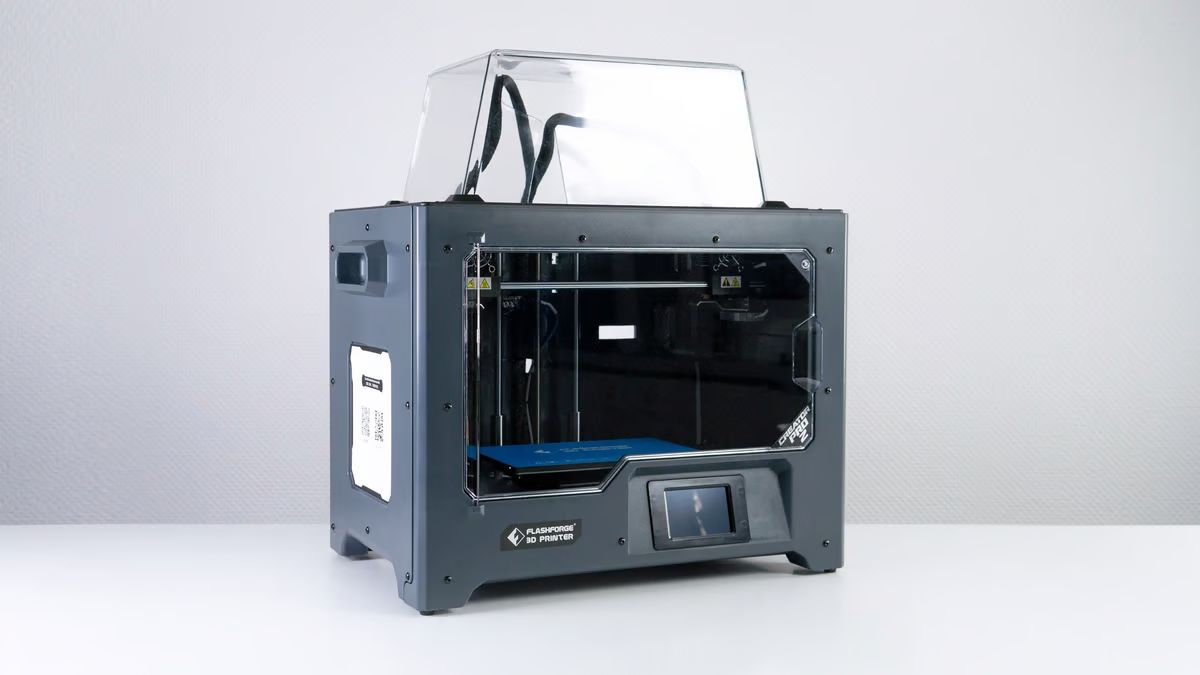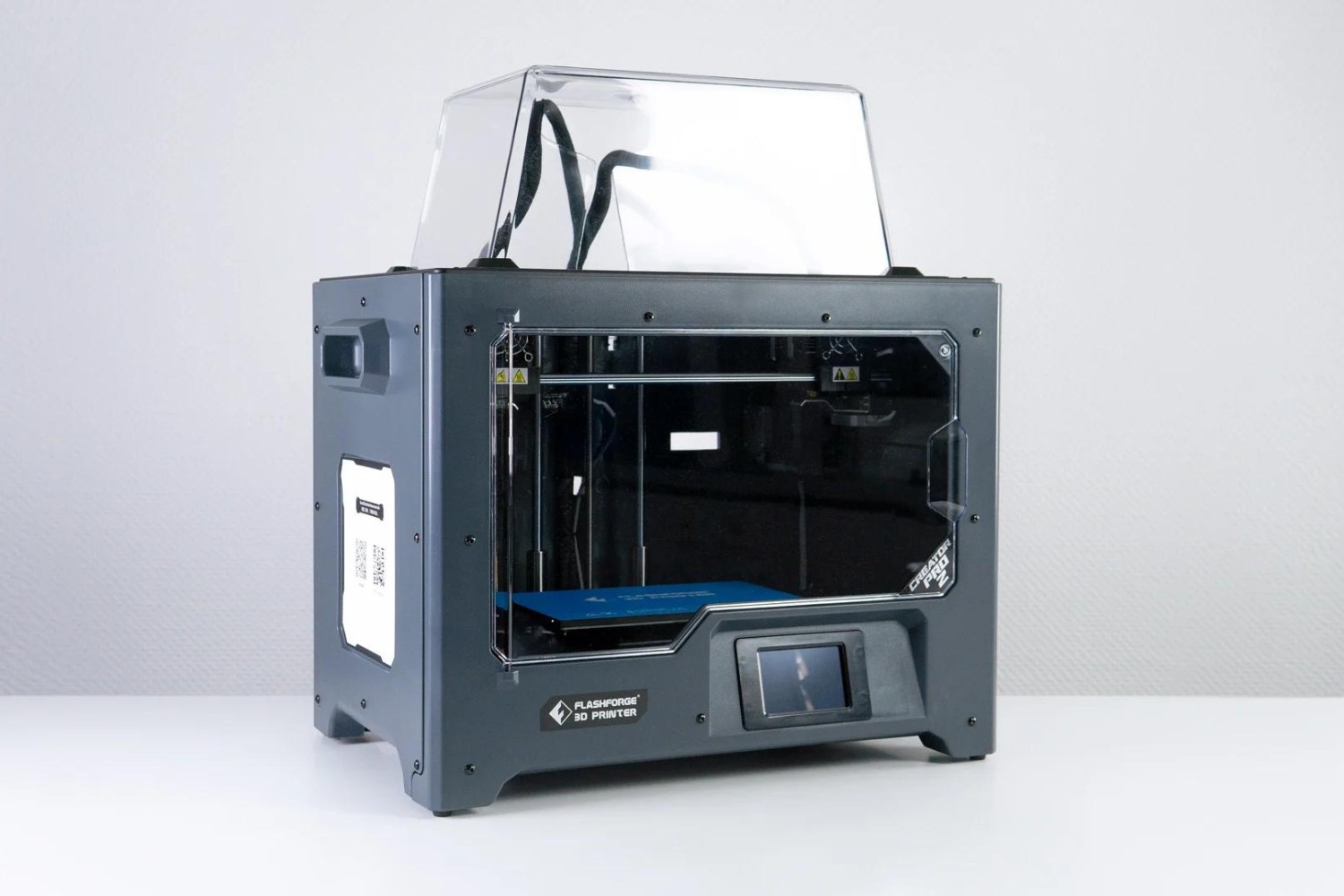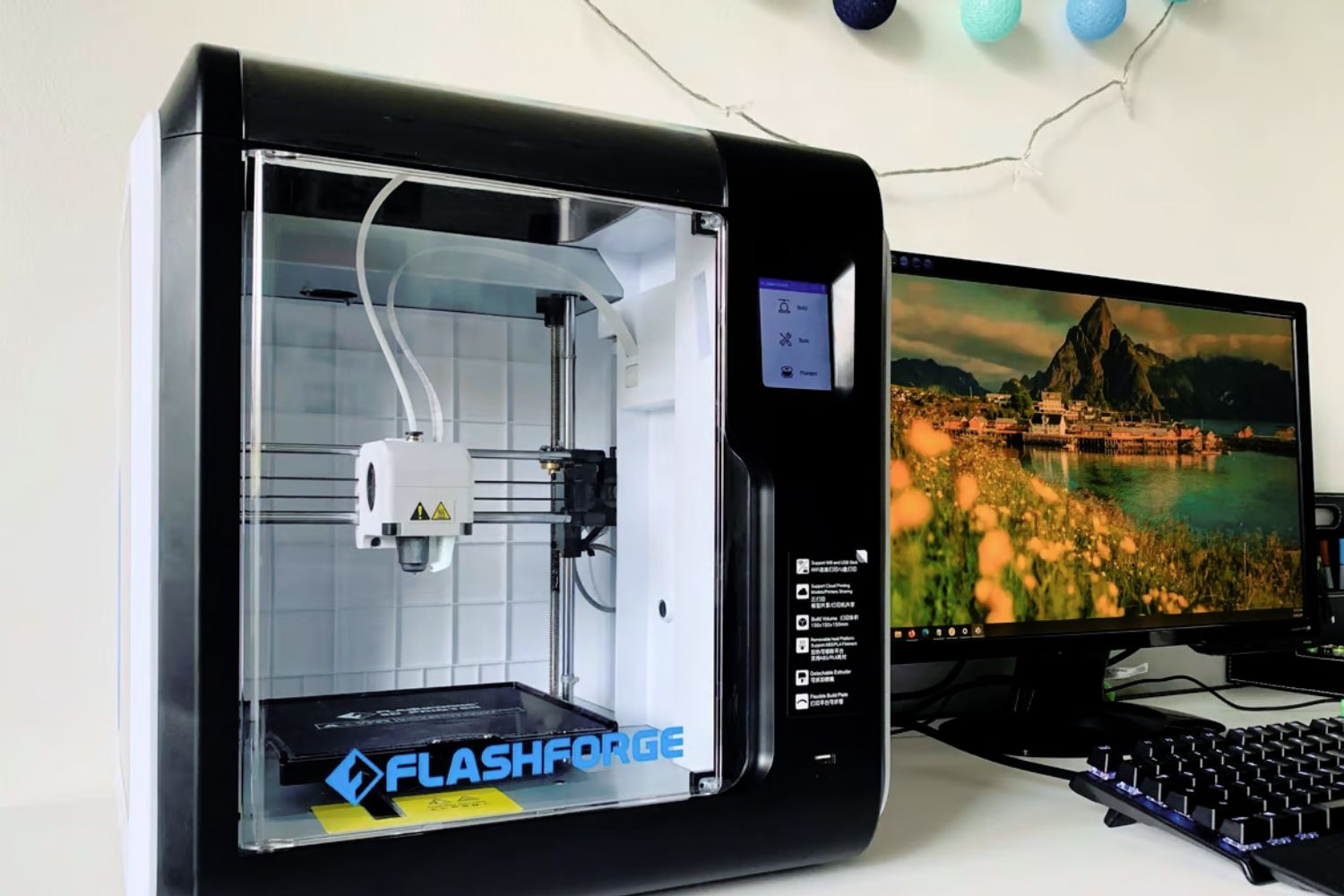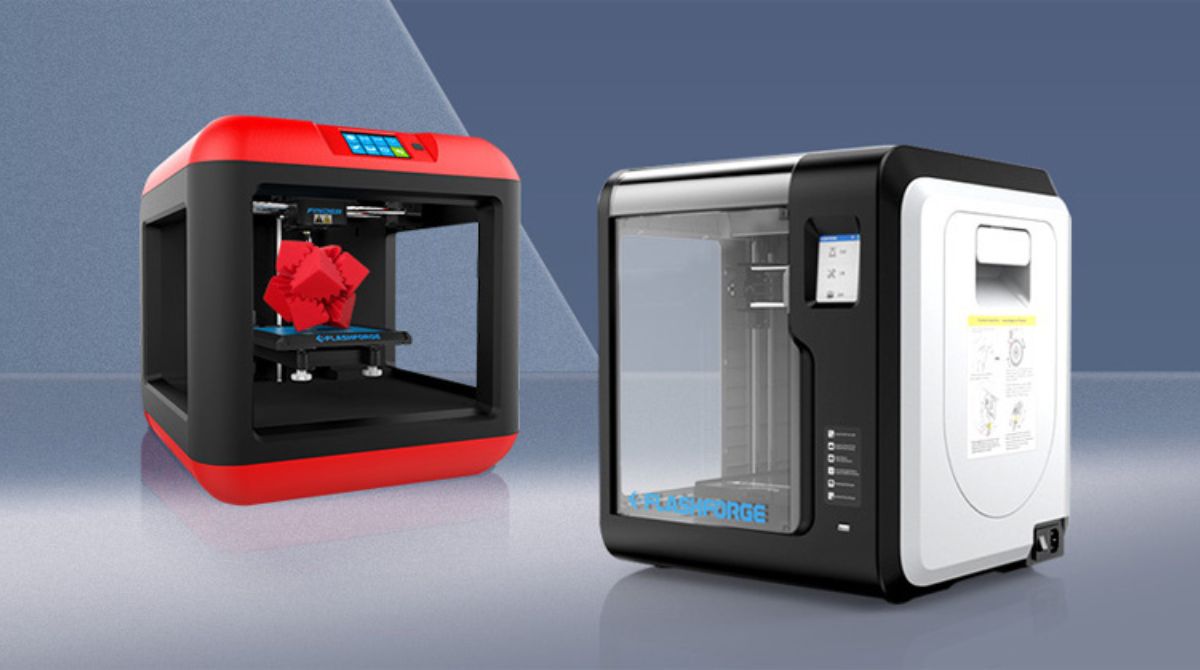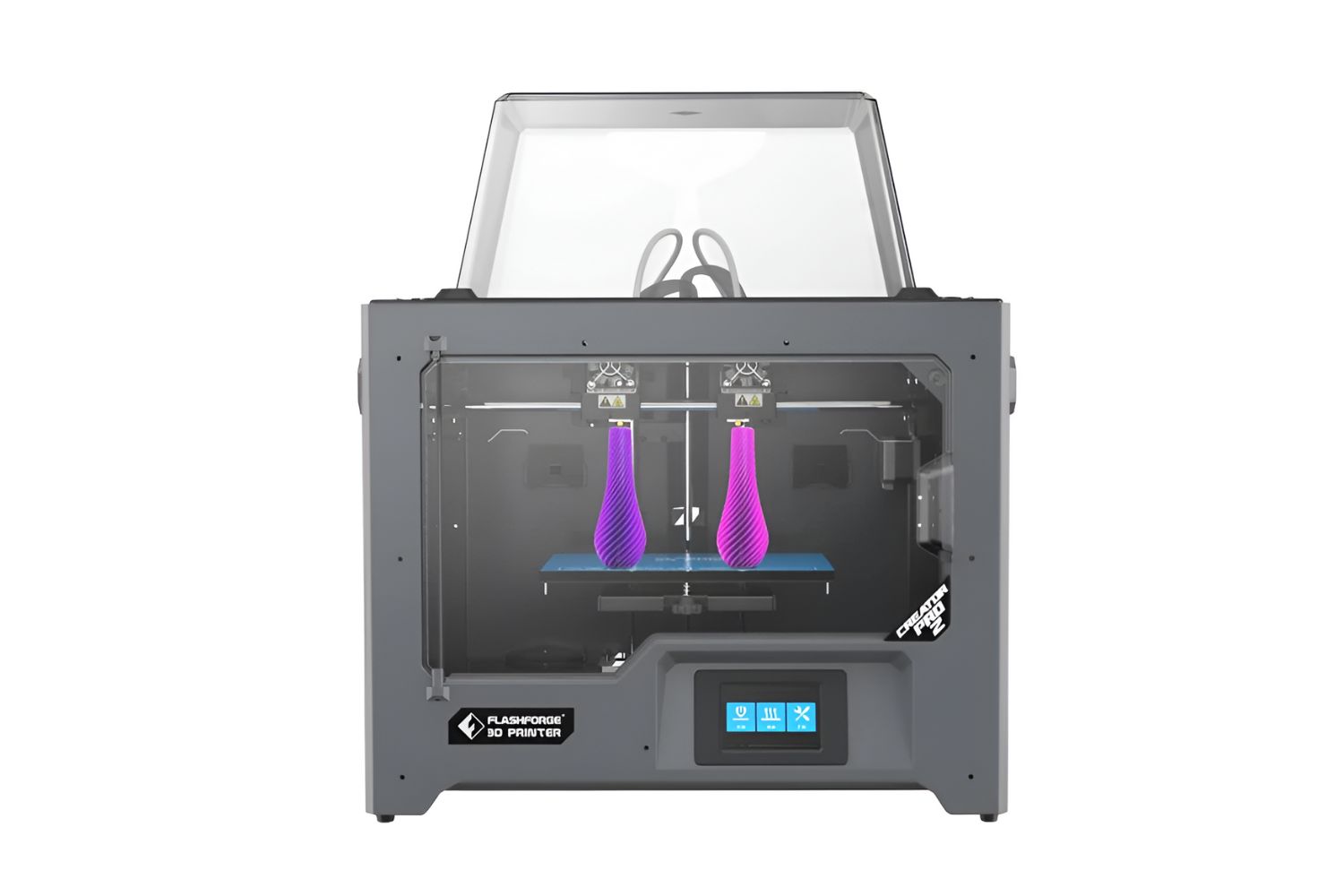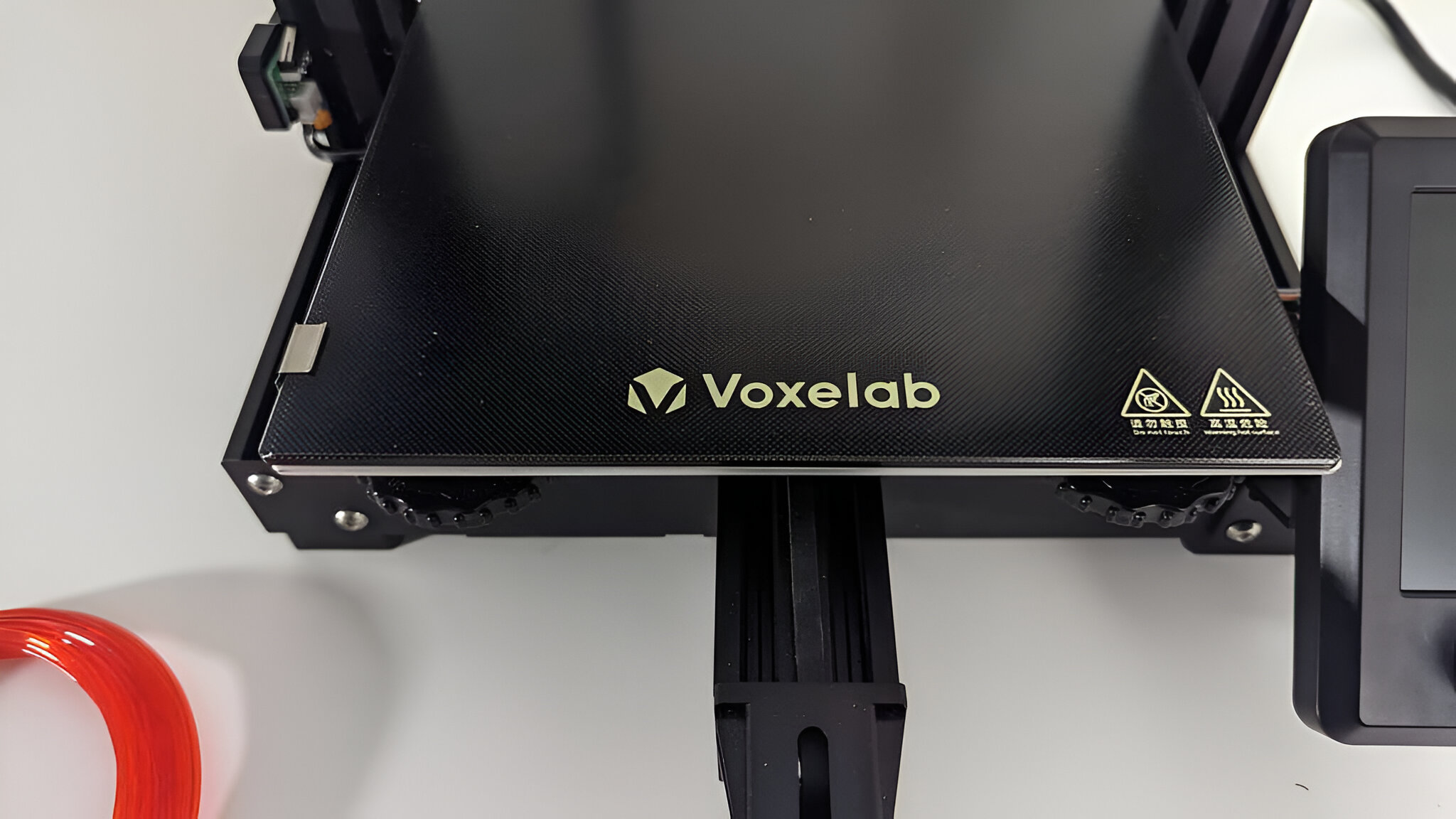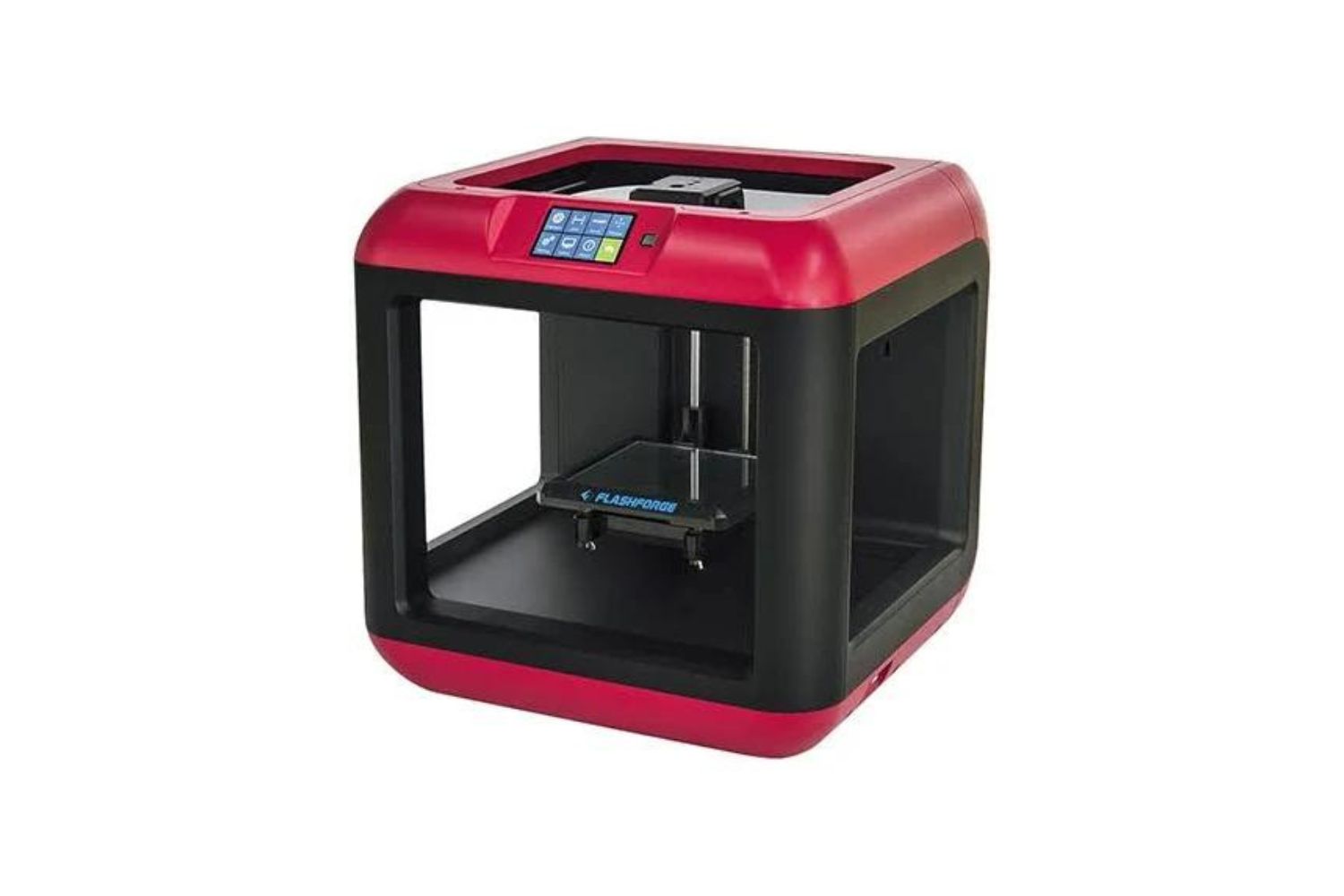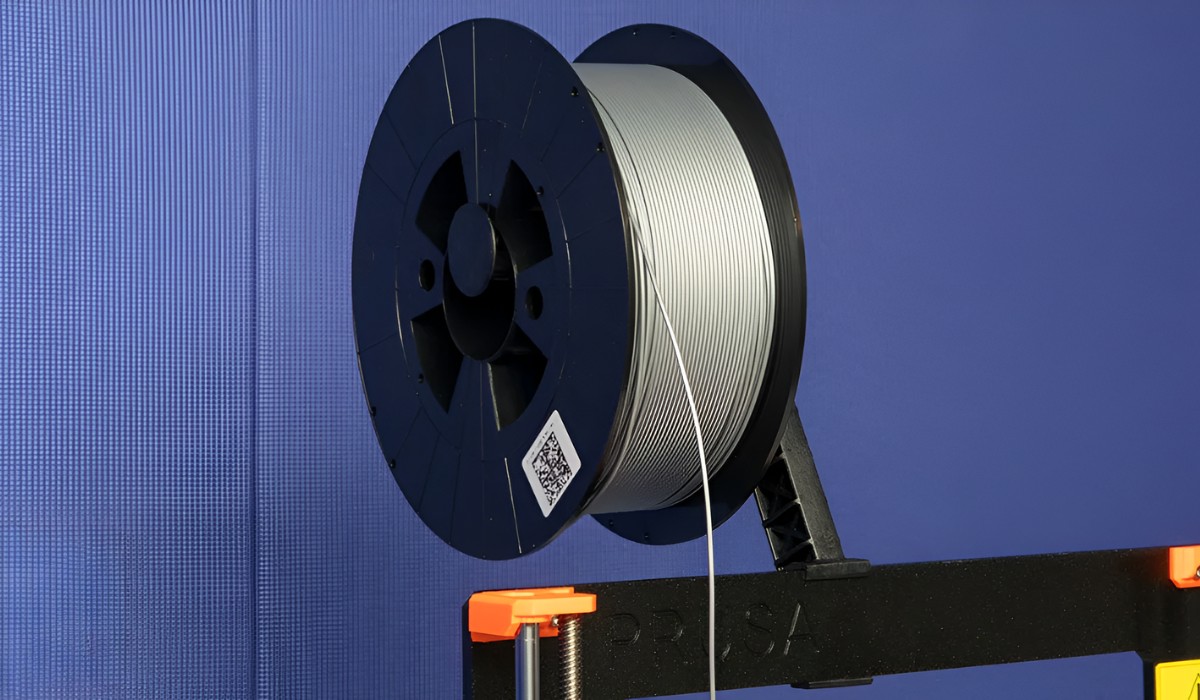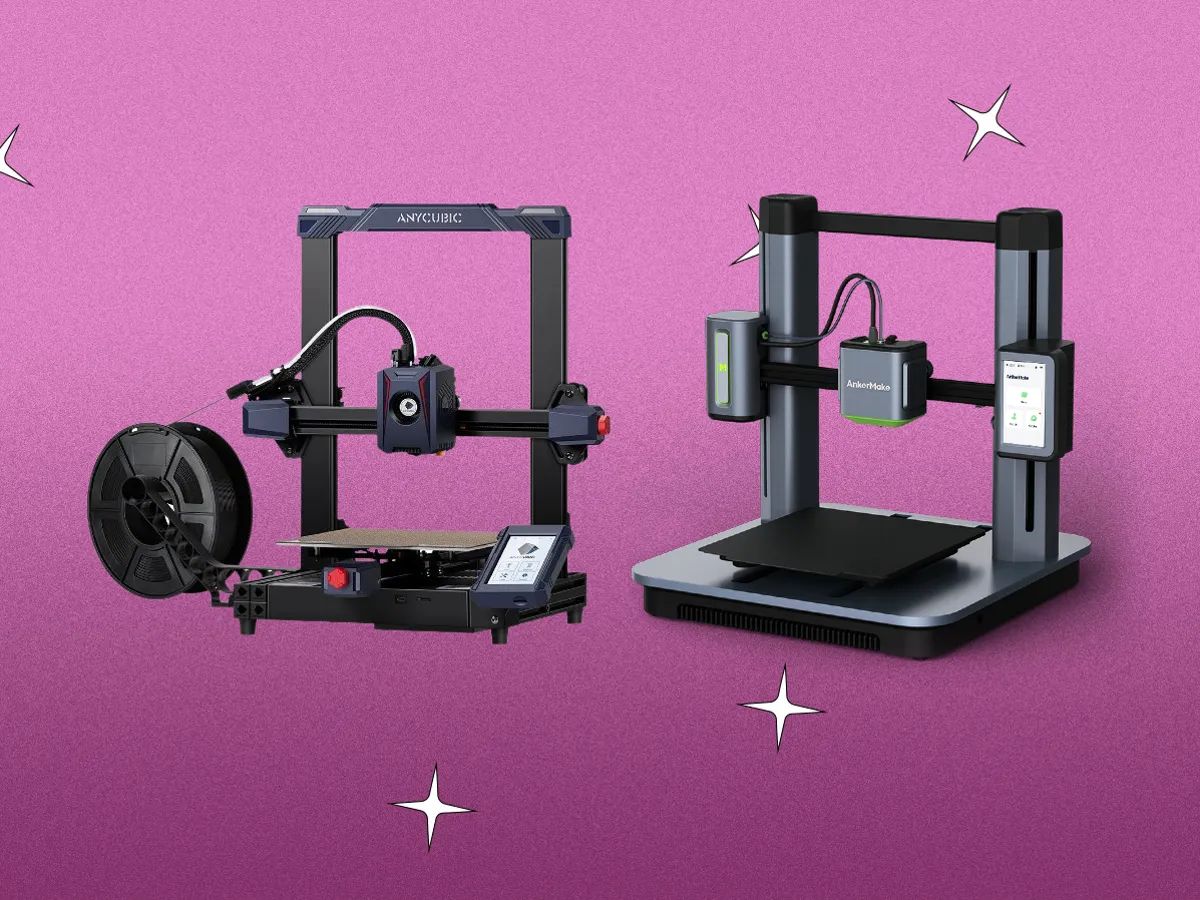Introduction
Welcome to the world of 3D printing! Flashforge is a prominent player in the realm of 3D printers, known for its quality craftsmanship and innovative technology. If you’re new to the world of 3D printing or are considering purchasing a Flashforge 3D printer, it’s important to understand the file formats that are compatible with these machines. In this article, we will explore the different file formats supported by Flashforge 3D printers and provide you with a comprehensive overview of each format.
With 3D printing becoming increasingly popular, it’s crucial to have a good understanding of the formats used in this fascinating industry. 3D printing formats are essentially the languages that communicate between your computer and the 3D printer. These formats contain all the necessary information to bring your digital design to life. Choosing the right format ensures that your creations are accurately translated into physical objects.
If you own or plan to purchase a Flashforge 3D printer, you’ll be pleased to know that it supports a wide range of file formats. From the popular STL format to the versatile OBJ format, Flashforge ensures compatibility with commonly used file standards. Additionally, Flashforge printers utilize the G-Code format to execute the printing process. Understanding each format and its capabilities will allow you to optimize your 3D printing experience.
Throughout this article, we will delve into the details of the STL, OBJ, and G-Code file formats, explaining their purposes and features. We will also touch upon FlashPrint, a slicing software developed by Flashforge that serves as a bridge between your design files and the printer. By the end of this article, you will have a comprehensive understanding of the file formats and software necessary to unleash your creativity with a Flashforge 3D printer.
What is Flashforge 3D Printer?
Flashforge is a well-established brand in the 3D printing industry, known for its high-quality and reliable 3D printers. Their printers are revered by hobbyists, professionals, and enthusiasts alike for their precision, user-friendly interface, and versatility. Flashforge offers a range of 3D printers with different features and specifications, catering to the diverse needs of users.
Flashforge 3D printers make use of additive manufacturing technology, also known as 3D printing, to create physical objects from digital designs. These printers work by layering materials, such as plastics or resins, to build objects layer by layer. This process allows for intricate and complex designs to be realized with precision and accuracy.
Flashforge 3D printers are known for their exceptional build quality, ensuring durability and longevity. They boast sturdy frames and robust components that contribute to their reliability and consistent performance. Flashforge takes pride in the ease of use and accessibility of their printers, making 3D printing accessible to beginners and professionals alike.
Flashforge 3D printers also offer various features and functionalities that enhance the printing experience. From large build volumes to dual extruders enabling multi-color and multi-material printing, Flashforge provides options that suit different project requirements. Their machines are equipped with user-friendly interfaces, LCD touchscreens, and intuitive controls, making navigation and customization hassle-free.
The FlashPrint slicing software, developed by Flashforge, is specifically designed to work seamlessly with their 3D printers. This software is responsible for taking your digital design, breaking it down into layers, and generating G-Code instructions that the printer can interpret. FlashPrint offers a user-friendly interface with numerous settings to customize your prints, ensuring optimal results.
Whether you’re a hobbyist experimenting with creative designs, an engineer prototyping functional parts, or an educator incorporating 3D printing into your curriculum, Flashforge 3D printers provide reliable, high-quality printing at an affordable price point. With their wide range of features and compatibility with various file formats, Flashforge printers are an excellent choice for anyone looking to explore the endless possibilities of 3D printing.
Understanding 3D Printing Formats
Before delving into the specific file formats supported by Flashforge 3D printers, it’s essential to have a basic understanding of 3D printing formats in general. These formats contain the necessary information to instruct the 3D printer on how to create the physical object based on your digital design.
One of the most common file formats used in 3D printing is the STL format. STL stands for stereolithography, a process developed by 3D Systems for creating 3D models by printing layer upon layer. The STL file format represents the surface geometry of a 3D model using a collection of triangles. It describes the shape and size of the object based on a mesh structure. STL files are widely supported by 3D printers and design software, making them versatile and accessible.
Another popular file format in 3D printing is the OBJ format. OBJ, which stands for object, is an open file format that contains both the geometry and texture information of a 3D model. It is a versatile format that can store complex object data, including color, texture mapping, and surface finish details. OBJ files are commonly used in the gaming and animation industry and can be easily converted for 3D printing purposes.
In addition to the geometry and texture formats, 3D printers require instructions on how to execute the printing process. This is where the G-Code format comes into play. G-Code is a standardized language that contains a series of commands that control the movements and operations of the 3D printer. It provides instructions on coordinates, nozzle temperature, print speed, layer height, and other parameters crucial to the printing process.
Understanding these 3D printing formats allows you to choose the appropriate format for your specific needs. Whether you’re working with a simple geometric model or a complex multi-textured design, selecting the right format ensures that the 3D printer can accurately and effectively bring your design to life.
Now that we have a grasp on the basics of 3D printing formats, let’s explore the specific formats supported by Flashforge 3D printers and how they contribute to the printing process.
Supported File Formats by Flashforge 3D Printers
When it comes to file format support, Flashforge 3D printers ensure compatibility with a wide range of formats, allowing users flexibility in their 3D printing projects. Whether you’re a beginner or an experienced designer, Flashforge printers provide you with the ability to work with different formats based on your preferences and design requirements.
One of the primary file formats supported by Flashforge printers is the STL format. STL, which stands for stereolithography, is a widely used format in the 3D printing industry. It represents the 3D model as a collection of triangles, defining the shape and size of the object. The STL format is versatile, making it compatible with various design software and modeling tools. This compatibility allows you to easily export your designs as STL files and prepare them for printing using Flashforge 3D printers.
Flashforge printers also support the OBJ format, which is known for its ability to store intricate geometric and texture details of a 3D model. OBJ files, commonly used in the gaming and animation industry, can seamlessly translate into 3D prints through Flashforge printers. The support for OBJ files enables you to import complex and textured 3D models into the FlashPrint software, allowing for detailed and visually appealing prints.
In addition to the geometry formats, Flashforge 3D printers are compatible with the G-Code format. G-Code is a standardized language that contains a series of instructions for the 3D printer to follow during the printing process. Flashforge printers rely on G-Code to execute commands related to coordinates, print speed, temperature, and other parameters. By supporting the G-Code format, Flashforge printers ensure seamless integration with various slicing software programs, providing users with flexibility and control over their printing settings.
Flashforge 3D printers also support other commonly used formats, such as STEP, IGES, and PLY. These formats offer additional options for importing and exporting 3D models, providing compatibility with different design software and facilitating collaborations with others in the 3D printing community.
With support for an array of file formats, Flashforge 3D printers empower users to explore their creativity without limitations. Whether you’re working with simple geometric designs or complex textured models, Flashforge printers ensure that you can seamlessly import, prepare, and print your designs, resulting in high-quality and accurate 3D prints.
Now that we have covered the supported file formats, let’s dive deeper into the specifics of the STL, OBJ, and G-Code formats, and understand their unique features and functionalities in the context of Flashforge 3D printers.
STL File Format
The STL (stereolithography) file format is widely used in the 3D printing industry and is supported by Flashforge 3D printers. It is a standard way of representing 3D models as a collection of triangles, known as a mesh. The simplicity and versatility of the STL format make it one of the most commonly used formats for 3D printing.
The STL format breaks down the 3D model into a series of triangular facets, each defined by three vertices and a normal vector. This mesh representation allows Flashforge 3D printers to accurately interpret the geometry of the object. The STL file format does not contain any color or texture information, focusing solely on the object’s shape and size.
When working with STL files, it’s important to ensure the file has been properly optimized for 3D printing. This involves checking for manifoldness, which refers to whether the model is solid and free from any surface errors or gaps. Flashforge printers require a watertight and fully enclosed model to ensure successful printing. If the STL file has any issues, it may result in unexpected errors or incomplete prints.
FlashPrint, the slicing software developed by Flashforge, allows users to import and manipulate STL files easily. Within the software, you can adjust the orientation, scale, and positioning of the model to optimize the print. FlashPrint also provides numerous options for supporting structures, layer height, print speed, and other advanced settings, allowing users to customize the print quality and overall result.
Using the STL file format with Flashforge 3D printers offers a seamless and efficient workflow from design to print. The compatibility ensures that you can easily export your designs from various modeling software in the STL format and import them into FlashPrint for further processing and preparation. With Flashforge’s support for the STL format, you can confidently create and print your 3D models with accuracy and precision.
OBJ File Format
The OBJ file format is another commonly used format in the 3D printing industry and is fully supported by Flashforge 3D printers. OBJ, short for object, is an open format that can store both the geometry and texture information of a 3D model. Its versatility makes it a popular choice for designers and artists working in various industries.
Unlike the STL format, which represents a 3D model as a collection of triangles, the OBJ format allows for more complex representation, including texture mapping, color, and surface finish details. This means that OBJ files can store highly detailed and visually appealing models, making them ideal for creating lifelike and intricate prints.
Flashforge 3D printers handle OBJ files seamlessly, allowing you to import designs with complex geometry and texture details into the FlashPrint slicing software. The software supports the OBJ format, enabling you to visualize and adjust the appearance of your model within its user-friendly interface. You can easily manipulate the position, orientation, and scaling of the design to achieve the desired print result.
When preparing OBJ files for 3D printing, it is important to ensure that the file is optimized and ready for printing. This includes checking for non-manifold geometry and overlapping faces, as well as ensuring that the texture and material assignments are correctly defined. FlashPrint provides tools to inspect and repair OBJ files, ensuring that your prints are successful and accurate.
With the support for the OBJ format, Flashforge 3D printers offer users the flexibility to work with highly detailed and visually rich models. Whether you’re creating models for architectural visualizations, character designs, or intricate sculptures, Flashforge printers can accurately translate your OBJ files into stunning physical prints.
Through the combination of the OBJ format and Flashforge’s intuitive workflow, you can unleash your creativity and bring your most intricate and visually appealing designs to life with ease.
G-Code File Format
The G-Code file format is crucial in the world of 3D printing, as it contains the detailed instructions necessary for Flashforge 3D printers to execute the printing process. G-Code, short for “geometric code,” is a standardized language that conveys commands to the 3D printer, instructing it on movements, temperatures, speeds, and other parameters.
Flashforge 3D printers rely on G-Code to interpret and execute the necessary operations for successful printing. The G-Code file contains a series of commands that guide the printer’s extruder along precise X, Y, and Z axes, creating layers and shaping the final object. It specifies information such as nozzle temperatures, extrusion rates, travel speeds, layer heights, and more, ensuring optimal print quality and accuracy.
Generating G-Code is an essential step in the 3D printing workflow. This is where the slicing software, like FlashPrint, comes into play. FlashPrint takes your 3D model, built using formats such as STL or OBJ, and converts it into a toolpath, breaking it down into individual layers and generating the corresponding G-Code instructions.
Within FlashPrint, you have control over various settings that directly affect the G-Code output. This includes adjusting print speeds, infill density, support structures, and more. By fine-tuning these settings, you can optimize the printing process to achieve the desired balance between speed, strength, and print quality.
Once you have generated the G-Code file using the slicing software, you can transfer it to the Flashforge 3D printer for printing. The printer reads the G-Code instructions line by line, precisely moving the extruder and depositing the material layer by layer to build the final object. The ability to interpret G-Code allows Flashforge printers to produce intricate and complex designs with accuracy and precision.
G-Code gives users flexibility and control over their printing parameters. It allows for customization and experimentation, enabling fine-tuning of the printer’s behavior to meet specific project requirements. This level of control contributes to the versatility and adaptability of Flashforge 3D printers, making them suitable for a wide range of applications and user preferences.
In summary, the G-Code file format is a vital component in the 3D printing process with Flashforge printers. It provides the necessary instructions for the printer to execute precise movements, temperatures, and parameters, resulting in accurate and high-quality prints.
FlashPrint Slicing Software
Flashforge provides the powerful slicing software called FlashPrint, designed specifically to work seamlessly with their 3D printers. This user-friendly software simplifies the preparation of 3D models for printing by converting them into a format that the printer can understand.
FlashPrint offers a range of features and tools to enhance the 3D printing workflow. It supports multiple file formats, including STL and OBJ, allowing you to import your designs and prepare them for printing. FlashPrint’s intuitive interface provides an easy-to-navigate workspace where you can visualize and manipulate your models with ease.
One of the key features of FlashPrint is its ability to slice 3D models into layers, generating the necessary G-Code instructions for the printer. Within the software, you can adjust settings such as layer height, print speed, and infill density. These settings directly affect the print quality and can be customized based on the requirements of your project.
FlashPrint also offers advanced support structure options, ensuring complex and overhanging geometries print successfully. You can choose between autogenerated supports or manually add custom supports using the software’s intuitive support editor. This feature helps to achieve optimal print quality while reducing the risk of failures due to insufficient support.
Moreover, FlashPrint provides various print preview tools, allowing you to visualize your design before it’s sent to the printer. This includes features like layer view, which shows a cross-sectional preview of each layer, and time estimate, which predicts the duration of the print. These tools enable you to optimize your workflow, identify potential issues, and make any necessary adjustments before starting the print job.
FlashPrint is continuously updated by Flashforge, ensuring compatibility with the latest firmware and maintaining high printing standards. Users can easily download the software from the Flashforge website and enjoy regular updates for improved performance and new features.
Whether you’re a beginner or an experienced user, FlashPrint offers an intuitive and comprehensive solution for preparing your 3D models for printing. The software’s user-friendly interface, extensive feature set, and compatibility with Flashforge 3D printers make it a valuable tool in the 3D printing workflow. With FlashPrint, you can unleash your creativity, optimize your prints, and achieve outstanding results with your Flashforge 3D printer.
Conclusion
Flashforge 3D printers offer a wide range of possibilities for creators, whether you’re a hobbyist, professional, or educator. Understanding the different file formats that Flashforge printers support is crucial for maximizing your 3D printing experience.
The STL format, widely used in the industry, provides a straightforward representation of 3D models and ensures compatibility with Flashforge printers. OBJ files, on the other hand, allow for more complex and detailed designs, including texture mapping and color information. Flashforge printers seamlessly handle both formats, enabling you to bring your creative visions to life.
Additionally, Flashforge printers rely on the G-Code format to execute print instructions. This standardized language allows for precise control of movements, temperatures, and parameters during the printing process. With G-Code, Flashforge printers provide the accuracy and precision required to produce high-quality prints.
Flashforge’s slicing software, FlashPrint, is an essential tool in the 3D printing workflow. It simplifies the process of preparing models for printing, offering features like customizable print settings, support generation, and visualizing tools. FlashPrint’s user-friendly interface and continuous updates ensure an intuitive and efficient experience when working with Flashforge printers.
By understanding and utilizing the supported file formats and the capabilities of FlashPrint, you can unleash your creativity and explore the endless possibilities of 3D printing. Whether you’re designing prototypes, creating intricate sculptures, or implementing 3D printing into your educational curriculum, Flashforge printers provide the flexibility, reliability, and performance you need for successful prints.
Investing in a Flashforge 3D printer opens up a world of possibilities, allowing you to turn your digital designs into tangible objects. So, whether you’re an experienced designer or just starting your 3D printing journey, embrace the power of Flashforge and unleash your creativity like never before.







